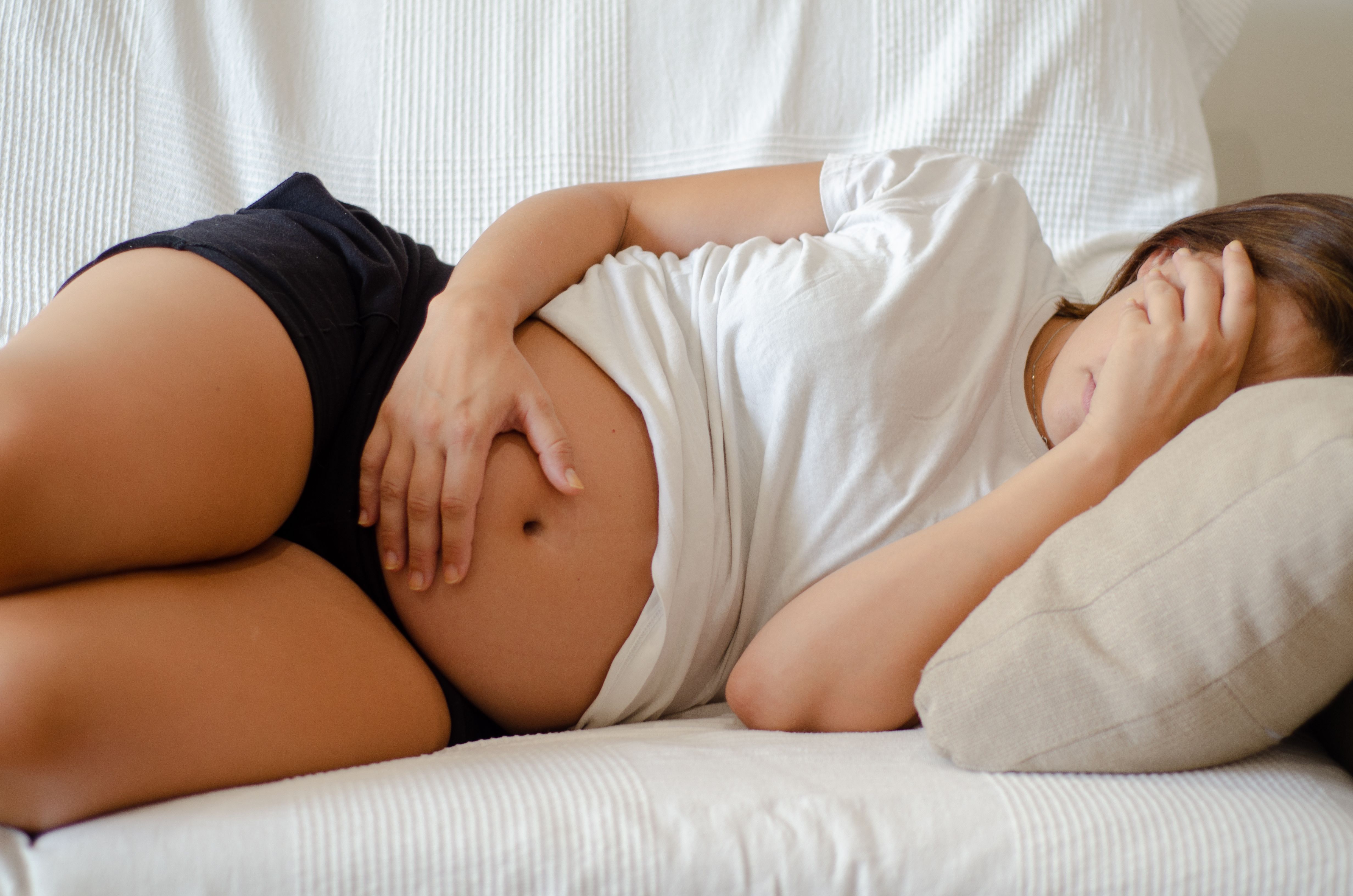Publication
Article
Psychiatric Times
Female Offenders: Patterns, Risk, and Assessment
Author(s):
Key Takeaways
- Female offenders often have psychiatric histories, including trauma and mood disorders, influencing their criminal behavior and necessitating comprehensive forensic evaluations.
- Female offenders typically commit crimes in relational contexts, often as reactions to acute stressors, contrasting with male offenders' chronic criminal patterns.
Female offenders in the criminal justice system are more likely to have experienced trauma and are more likely to be diagnosed with conditions such as PTSD and depression compared with male offenders.
Michael/AdobeStock

Although male defendants outnumber female defendants by approximately 6:1, the number of female defendants convicted of violent offenses has grown by 30% compared with 12% among male defendants since 1990.1 There are currently an estimated 2.1 million female violent offenders compared with an estimated 13.1 million male violent offenders. Importantly, violent female offenders represent a unique population with distinct psychiatric profiles. Many female offenders have psychiatric histories of trauma, posttraumatic stress disorder (PTSD), mood disorders, and substance use disorder.2 As a result, female offenders can present with maladaptive coping strategies, impulsive behavior, and emotional dysregulation that often manifest as violent offenses.
Forensic evaluations of female offenders involve evaluating their psychiatric conditions, considering the impact of trauma and other psychosocial factors, and identifying risk factors that may have affected their criminal activity or may affect future offenses. These assessments help inform legal decisions regarding sentencing, treatment, and rehabilitation. Forensic psychiatric evaluation also becomes important when evaluating the origins of criminal behavior and the influence of external factors. Understanding the differences between female and male offenders is important when answering specific medical legal questions.
Aggression and Criminal Behavior
Female offenders tend to exhibit distinct patterns of criminal behavior characterized by shorter criminal histories and crimes often driven by immediate personal or familial issues rather than established criminal patterns more commonly seen in male offenders.3 Female offenders are more likely to commit violent offenses at or near the victim’s home, reflecting the relational and situational nature of their aggression, whereas crimes committed by male offenders are less frequently linked to such locations.4 Female offenders are also more likely to express aggression within relationships, often as a response to acute stressors such as verbal or physical violence, which can precede their offenses.5,6 Although aggression is traditionally regarded as a masculine trait, research indicates that females with mental health concerns have a potential for violence comparable with their male counterparts but commit violent acts less frequently.6
When women engage in extreme violence, it is often a reaction to extreme life circumstances. Female offenders are typically older at the time of their first offense, and for many, this offense is their first and only arrest.6 Additionally, regarding the type of crime, female offenders are less likely in general than male offenders to commit property crimes, including burglary, larceny, and auto theft.7 The influence of relational and situational factors on the pathway to offenses by females contrasts with that of male offenders, in which chronic and instrumental patterns of criminal behavior are more often seen.
Psychiatric Diagnoses
Female offenders are more likely to be diagnosed with affective disorders, such as depression, compared with male offenders, who are less likely to receive these diagnoses.8 Female offenders diagnosed with schizophrenia demonstrate a higher risk of violent crime than their male counterparts with the same diagnosis, emphasizing the influence of psychosis on women’s violence risk.9 In findings from other studies, psychosis appears to have a greater impact on the risk of violence in women than in men. However, much of this is mediated by substance use disorder, highlighting the need for integrated treatment of schizophrenia and substance use prevention in violence reduction strategies.10 In general, women who experience persecutory delusions tend to exhibit lower rates of violence compared with men with similar delusions.11
Issues in Juvenile Populations
Female juvenile offenders score higher on traits such as neuroticism and anger but score lower on hostility and psychopathy compared with their male counterparts.12 They tend to display fewer callous-unemotional traits, more emotional symptoms, and greater prosocial behaviors, reflecting a lower baseline for violent offending.12 Female youth have considerably lower rates of violent offenses than males and are more likely to desist from such behavior as they transition into adulthood, with 74.4% of females with violent offenses ceasing violent behavior compared with only 36% of males with violent offenses.13 Males are more frequently referred to juvenile court for property, felony, and violent offenses compared with female juvenile offenders, and exposure to marital violence in childhood increases the likelihood of juvenile court referrals for both sexes.
Girls with histories of physical abuse are arrested for violent offenses more often than boys with similar experiences, though nearly all referrals for violent offenses among girls involve domestic violence, emphasizing the relational nature of their aggression.14 Female juvenile offenders are less likely to engage in chronic or instrumental violence and are often driven to offenses by impulsive reactions to stress or interpersonal violence, setting them apart from the more persistent and extensive patterns observed in male offenders.14
Socioeconomic Factors
Social factors also differentiate male and female offenders. Female offenders who commit homicide are more likely to live in a house, whereas male offenders are more frequently unhoused or reside in apartments.4 Female violent offenders are more likely to harm individuals they know—particularly family members, partners, or close friends—in contrast to men, who are more likely to harm acquaintances or strangers.10
Poverty, unemployment, and lack of education exacerbate stress and vulnerability for both genders, but their manifestations differ. Men are more likely to commit instrumental violence, such as robbery or gang-related acts, as a means of achieving financial stability or status. In contrast, women’s violent acts often emerge within contexts of caregiving stress, dependency, or survival strategies exacerbated by poverty, such as remaining in abusive relationships.15 Additionally, a significant number of women involved in violent offenses have experienced intimate partner violence, leading to defensive violence, retaliatory actions, or offenses committed under coercion from abusive partners.16
Risk Factors
Risk factors for female offenders can differ from male offenders, particularly when considering extreme acts of violence such as homicide. For both male and female offenders, violence risk factors include criminal versatility, reoffending rates, juvenile conduct disorder, and probation or parole revocation. These risk factors are less influential for female offenders compared with male offenders, as most female offenders commit their offense as their first and only arrest.6
Although both genders share the “big 4” risk factors (history of criminal behavior, antisocial personality patterns, antisocial attitudes, and antisocial associates), the influence of the “modest 4” risk factors (family/marital issues, school/work problems, leisure/recreation deficits, and substance use disorder) is debated regarding gender differences.12 For women, specific risk factors have been identified that include young age, social-assisted housing, early conduct problems, being a survivor of domestic violence, excessive drinking, self-harming behaviors, and prior criminal justice involvement. Early conduct problems, such as aggression or defiance, are strong predictors of later violent behavior in women and men.9 However, younger women are particularly vulnerable to violent behavior due to impulsivity, underdeveloped decision-making skills, and susceptibility to peer influence compared with male offenders.
The Role of Victimization
Both male and female victims of maltreatment are more likely to become offenders, with higher rates of offending, earlier onset of criminal behavior, and a greater likelihood of becoming chronic offenders compared with those without a history of victimization.17 Female offenders, however, are more likely to have experienced sexual and physical abuse and emotional neglect.8 Findings from studies reveal that female offenders report higher rates of childhood sexual abuse, with estimates ranging from 14% to 26% compared with 2% to 30% for males.18,19 Female offenders who commit homicide also report greater exposure to family violence and abusive home environments than their male counterparts.20
There is no significant difference between male and female offenders who commit homicide when it comes to growing up as children of divorce or without their biological parents, suggesting that certain aspects of victimization, such as direct abuse, have a more pronounced impact on female offenders.4 Trauma-related disorders, such as PTSD, have been associated with increased risk of violent crime conviction; however, this can be attributed to substance use or prior violence history.21 Female offenders exhibit higher rates of trauma-related disorders than males, with these disorders frequently stemming from sexual and physical abuse, leading to reactive violence.22
Substance Use
Substance use also plays a critical role in female offending, with stronger ties to violent behavior in female offenders than in male offenders. More specifically, women who have witnessed or experienced violence are more likely to misuse substances and react to stress with aggression or violence compared with men.23 When combined with environmental stressors such as poverty, victimization, and caregiving responsibilities, substance use disorder significantly increases the likelihood of criminal behavior, specifically in female offenders.24 In juvenile populations, females with substance use issues exhibit higher rates of early-onset substance use, particularly of substances other than alcohol or marijuana, compared with males, potentially putting them at risk for future criminal behavior.25 Additionally, results from a US Department of Justice survey found that female offenders are more likely to be using drugs or alcohol at the time of their arrest, with this relationship being stronger for women than men.19
Risk Assessment Tools
Risk assessment tools can help assess violence risk in male and female offenders. Actuarial tools such as the Violence Risk Appraisal Guide focus on static risk factors. However, they fall short when addressing dynamic factors such as mood instability, which is essential for assessing risk among offenders. In contrast, structured clinical assessments, such as the Historical Clinical Risk Management-20 (HCR-20) and Violence Risk Scale, offer more comprehensive evaluations by incorporating static and dynamic risk factors, providing a broader view of past and potential future violent offending behaviors.24
Research evaluating the predictive accuracy of violence risk assessment tools for male vs female offenders demonstrates a need for gender-specific modifications. However, it is unclear what the exact modifications should be due to conflicting results. The HCR-20, for example, has been found to predict violent outcomes more accurately in male offenders than in females in findings from 1 study.26 In findings from another study, the HCR-20 final risk judgment (as opposed to its total score) has shown significant predictive validity for violent outcomes in female patients. However, its overall predictive accuracy remains lower in women than in men.26 Findings from other studies comparing various risk assessment tools found that although the Offender Group Reconviction Scale ranked highest in predicting violence among men, the Psychopathy Checklist- Revised and the H Scale of the HCR-20 had better predictive validity for violence committed by females.27
Some risk assessment tools, such as the Level of Service/Risk, Need, Responsivity model and the Violence Risk Scale, reveal gender differences across most assessment categories, except criminal history.28 The overlap between psychopathic traits and impulsivity has also been emphasized in findings from studies examining predictors of violence in female offenders. Impulsivity has been associated with violent criminal activity, suggesting that women with psychopathic tendencies may engage in violence due to a combination of emotional instability and poor impulse control. However, it is unclear how this can manifest in specific criminal activity.29 Together, these findings demonstrate the need for further evaluation of risk assessment tools and the influence these assessments have on the gender of violent offenders.
Concluding Thoughts
Historically, biases have likely contributed to a misunderstanding of female criminal behavior, framing it as emotionally driven and impulsive. Female offenders in the criminal justice system are more likely to have experienced trauma and are more likely to be diagnosed with conditions such as PTSD and depression compared with male offenders. Comprehensive forensic assessments are critical in accurately identifying the underlying psychiatric conditions and risk factors for female offenses. Such evaluations inform sentencing and treatment strategies, helping ensure that the complex needs of female offenders are addressed.
Dr Hathaway is a PGY-3 resident at the University of Rochester Medical Center in New York.
Acknowledgment: Thank you to Renée Sorrentino, MD, who served as an editor for this article.
References
1. Greenfeld LA, Snell TL. Women Offenders. US Department of Justice. December 1999. Updated October 3, 2000. Accessed February 13, 2025. https://bjs.ojp.gov/content/pub/pdf/wo.pd
2. Trauffer N, Widom CS. Child abuse and neglect and psychiatric disorders in nonviolent and violent female offenders. Violence Gend. 2017;4(4):137-143.
3. Eriksson L, McPhedran S, Caman S, et al. Criminal careers among female perpetrators of family and nonfamily homicide in Australia. J Interpers Violence. 2021;36(5-6):NP2551-NP2575.
4. Yourstone J, Lindholm T, Grann M, Fazel S. Gender differences in diagnoses of mentally disordered offenders. Int J Forensic Ment Health. 2009;8(3):172-177.
5. Jung S, Rawana EP. Risk and need assessment of juvenile offenders. Crim Justice Behav. 1999;26(1):69-89.
6. Ferranti J, McDermott BE, Scott CL. Characteristics of female homicide offenders found not guilty by reason of insanity. J Am Acad Psychiatry Law. 2013;41(4):516-522.
7. Nagel IH, Hagan J. Gender and crime: offense patterns and criminal court sanctions. Crim Justice. 1983;4:91-144.
8. Muller E, Kempes M. Gender differences in a Dutch forensic sample of severe violent offenders. Int J Forensic Ment Health. 2016;15(2):164-173.
9. Yang M, Wong SCP, Coid JW. Violence, mental health, and violence risk factors among women in the general population: an epidemiology study based on two national household surveys in the UK. BMC Public Health. 2013;13:1020.
10. Friedman SH, Hall RCW, Sorrentino RM. Commentary: women, violence, and insanity. J Am Acad Psychiatry Law. 2013;41(4):523-528.
11. Teasdale B, Silver E, Monahan J. Gender, threat/control-override delusions and violence. Law Hum Behav. 2006;30(6):649-658.
12. Hornsveld RH, Zwets AJ, Leenaars EPEM, et al. Violent female offenders compared with violent male offenders on psychological determinants of aggressive behavior. Int J Offender Ther Comp Criminol. 2018;62(2):450-467.
13. Cauffman E, Fine A, Thomas AG, Monahan KC. Trajectories of violent behavior among females and males. Child Dev. 2017;88(1):41-54.
14. Herrera VM, McCloskey LA. Gender differences in the risk for delinquency among youth exposed to family violence. Child Abuse Negl. 2001;25(8):1037-1051.
15. Daly K. Women’s pathways to felony court: feminist theories of lawbreaking and problems of representation. South Calif Rev Law Womens Stud. 1992;2(1):11-52.
16. DeHart DD. Pathways to prison: impact of victimization in the lives of incarcerated women. Violence Against Women. 2008;14(12):1362-1381.
17. Widom CS. The cycle of violence. Science. 1989;244(4901):160-166.
18. Benoit JL, Kennedy WA. The abuse history of male sex offenders. J Interpers Violence. 1992;7(4):543-548.
19. Harlow CW. Prior Abuse Reported by Inmates and Probationers. US Department of Justice. April 1999. Accessed February 13, 2025. https://bjs.ojp.gov/content/pub/pdf/parip.pdf
20. Putkonen H, Weizmann-Henelius G, Lindberg N, et al. Gender differences in homicide offenders’ criminal career, substance abuse, and mental health care. A nationwide register-based study of Finnish homicide offenders 1995-2004. Crim Behav Ment Health. 2011;21(1):51-62.
21. Wallinius M, Nilsson T. PTSD, subsequent violence, and increased focus on trauma- informed care. Lancet Public Health. 2023;8(6):e398-e399.
22. Bloom B, Owen B, Covington S, Raeder M. Gender-Responsive Strategies: Research, Practice, and Guiding Principles for Women Offenders. US Department of Justice. June 2003. Accessed February 13, 2025. https://s3.amazonaws.com/static.nicic.gov/Library/018017.pdf
23. Fritz M, Karanassios G, Wolf V, et al. The curse of experiencing and committing violence as a criminal recidivism predictor: a comparison between female forensic psychiatric patients with severe mental disorders and substance use disorder. Eur Psychiatry. 2023;66(1):e74.
24. McKeown A. Female offenders: assessment of risk in forensic settings. Aggress Violent Behav. 2010;15(6):422-429.
25. Neff JL, Waite DE. Male versus female substance abuse patterns among incarcerated juvenile offenders: comparing strain and social learning variables. Justice Q. 2007;24(1):106-132.
26. de Vogel V, de Ruiter C. The HCR‐20 in personality disordered female offenders: a comparison with a matched sample of males. Clin Psychol Psychother. 2005;12(3):226-240.
27. Coid J, Yang M, Ullrich S, et al. Gender differences in structured risk assessment: comparing the accuracy of five instruments. J Consult Clin Psychol. 2009;77(2):337-348.
28. Gower M, Spiranovic C, Morgan F, Saunders J. The criminogenic profile of violent female offenders incarcerated in Western Australian prisons as per the Level of Service/Risk, Need, Responsivity (LS/RNR) and Violence Risk Scale (VRS). Psychiatr Psychol Law. 2022;30(2):192-210.
29. Thomson ND, Vassileva J, Kiehl KA, et al. Which features of psychopathy and impulsivity matter most for prison violence? New evidence among female prisoners. Int J Law Psychiatry. 2019;64:26-33.







